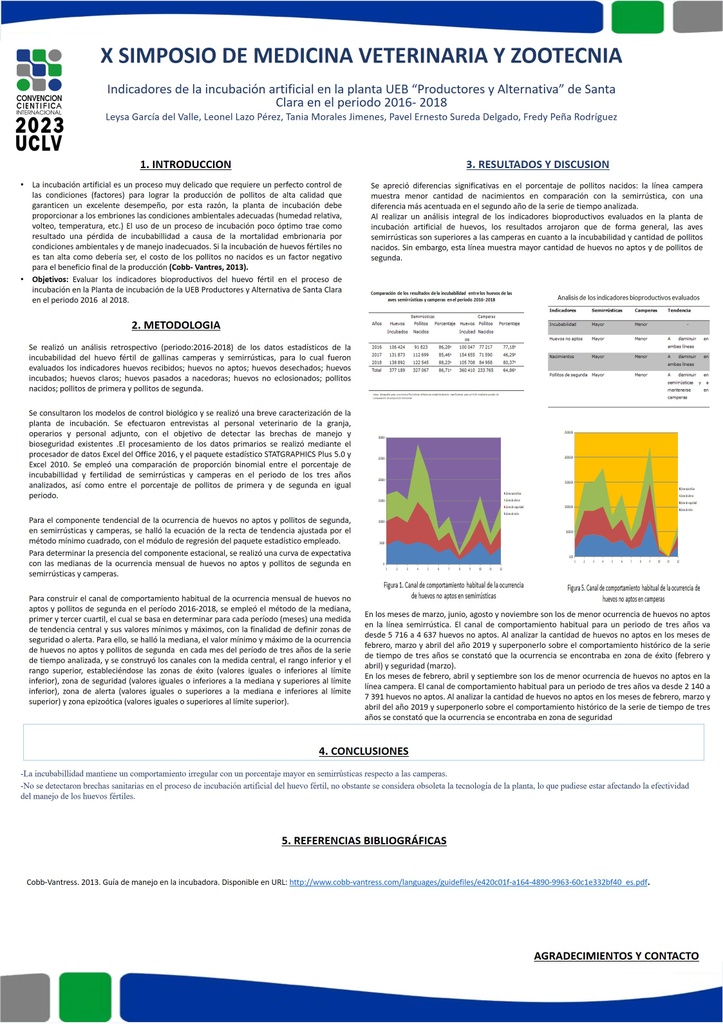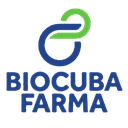Executive Secretary

9th International Scientific Conference on Agricultural Development and Sustainability
10th Symposium of Veterinary Medicine and Zootechnics

Abstract
This research was to evaluate the bioproductive indicators of the fertile egg in the incubation process in the incubation plant of the Basic Business Unit Producers and Alternatives of Santa Clara in the period 2016 - 2018. A retrospective analysis of the statistical data of the hatchability of the fertile egg, the bioproductive indicators were evaluated and a brief characterization of the incubation plant was carried out through interviews with the farm's veterinarian personnel, operators and deputy personnel. A comparison of binomial proportion between the percentage of hatchability and fertility of semi-rustic birds and free range birds was used in the period of the three years analyzed, as well as between the percentage of first and second chicks in the same period. Was found the equation of the trend line adjusted by the minimum square method, an expectation curve was made with the medians of the monthly occurrence of unfit eggs and second chicks. In order to construct the channel of habitual behavior of the monthly occurrence of unfit eggs and second chicks in the period, the method of the median, first and third quartile was used. The hatchability maintains an irregular behavior with a higher percentage in semi-rustic birds than in free range birds. No sanitary gaps were detected in the process of artificial incubation of the fertile egg, while the technology of the plant was considered obsolete, which could be affecting to a certain extent the effectiveness of the management of fertile eggs.
Resumen
En la investigación se evaluó los indicadores bioproductivos del huevo fértil en el proceso de incubación, en la Planta de incubación de la Unidad Empresarial Básica Productores y Alternativa de Santa Clara en el periodo 2016 – 2018. Se realizó un análisis retrospectivo de los datos estadísticos de la incubabilidad del huevo fértil, evaluándose los indicadores bioproductivos. Se realizó una breve caracterización de la planta de incubación mediante entrevistas al personal veterinario de la granja, operarios y personal adjunto. Se empleó una comparación de proporción binomial entre el porcentaje de incubabilidad y fertilidad de aves semirrústicas y camperas en el periodo de los tres años analizados, así como entre el porcentaje de pollitos de primera y de segunda en igual periodo. Se halló la ecuación de la recta de tendencia ajustada por el método mínimo cuadrado, se realizó una curva de expectativa con las medianas de la ocurrencia mensual de huevos no aptos y pollitos de segunda. Para construir el canal de comportamiento habitual de la ocurrencia mensual de huevos no aptos y pollitos de segunda en el período, se utilizó el método de la mediana, primer y tercer cuartil. La incubabilidad mantiene un comportamiento irregular con un porcentaje mayor en aves semirrústicas que en camperas. No se detectaron brechas sanitarias en el proceso de incubación artificial del huevo fértil, en tanto se considera obsoleta la tecnología de la planta, lo que pudiera estar afectando en cierta medida la efectividad del manejo de los huevos fértiles.
About The Speaker

Leonel Lazo Pérez

Discussion

